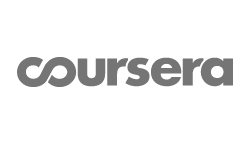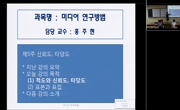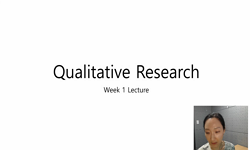<Background> This study aims, while analyzing convergence research articles of JIDR(Journal of Integrated Design Research), to provide fundamental understandings regarding convergence research trends and methodological characteristics, and works...
http://chineseinput.net/에서 pinyin(병음)방식으로 중국어를 변환할 수 있습니다.
변환된 중국어를 복사하여 사용하시면 됩니다.
- 中文 을 입력하시려면 zhongwen을 입력하시고 space를누르시면됩니다.
- 北京 을 입력하시려면 beijing을 입력하시고 space를 누르시면 됩니다.
부가정보
다국어 초록 (Multilingual Abstract)
<Methods> This study, utilizing a meta-analysis method, was conducted a systematic literature review to distinguish the convergent characteristics of JIDR articles. A research frame was developed to introduce philosophical assumptions working as the base of research methods, while briefly presenting ontological, epistemological, and methodological perspectives. The type, attribution, and characteristics of research methods were analyzed. The convergence articles of JIDR were selected as a unit of analysis.
<Result> First, a single method research design, utilizing qualitative research methods, was more dominant research type than convergence research design. A mixed methods research was uncommon yet. Second, both quantitative and qualitative research methods were similarly found to convergence research conducted with a mode of single method research. The purposes of convergence research with a quantitative research design were the evaluation and suggestion of alternative solutions, while the counterpart is more likely to prefer the evaluation and suggestion of alternative solutions to theory and model building. Third, the convergence research articles of JIDR with a mixed methods research design were categorized as exploratory, embedded, explanatory mixed methods. Fourth, the majority of convergence research articles were published by researchers with a design background. Fifth, constructivist and emancipatory perspectives in the philosophical assumptions of research methodology were mostly found. The assumptions recognize the plurality of truths and respects inductive logic.
<Conclusion> Philosophical assumptions regulates the compatibility of research methods to research problems. This study systematically analyzes the methodological trends of convergence research in the field of design and provides understandings about relationships between them to convergence researchers.
<Background> This study aims, while analyzing convergence research articles of JIDR(Journal of Integrated Design Research), to provide fundamental understandings regarding convergence research trends and methodological characteristics, and works as a reference for conduction convergence research.
<Methods> This study, utilizing a meta-analysis method, was conducted a systematic literature review to distinguish the convergent characteristics of JIDR articles. A research frame was developed to introduce philosophical assumptions working as the base of research methods, while briefly presenting ontological, epistemological, and methodological perspectives. The type, attribution, and characteristics of research methods were analyzed. The convergence articles of JIDR were selected as a unit of analysis.
<Result> First, a single method research design, utilizing qualitative research methods, was more dominant research type than convergence research design. A mixed methods research was uncommon yet. Second, both quantitative and qualitative research methods were similarly found to convergence research conducted with a mode of single method research. The purposes of convergence research with a quantitative research design were the evaluation and suggestion of alternative solutions, while the counterpart is more likely to prefer the evaluation and suggestion of alternative solutions to theory and model building. Third, the convergence research articles of JIDR with a mixed methods research design were categorized as exploratory, embedded, explanatory mixed methods. Fourth, the majority of convergence research articles were published by researchers with a design background. Fifth, constructivist and emancipatory perspectives in the philosophical assumptions of research methodology were mostly found. The assumptions recognize the plurality of truths and respects inductive logic.
<Conclusion> Philosophical assumptions regulates the compatibility of research methods to research problems. This study systematically analyzes the methodological trends of convergence research in the field of design and provides understandings about relationships between them to convergence researchers.
국문 초록 (Abstract)
<연구방법> 연구의 방법론적 지향은 메타분석으로 JIDR 게재논문들의 융합적 특성을 변별하기 위해 체계적 문헌조사를 시행한다. 연구방법론의 전제가 되는 인식론적, 존재론적, 그리고 방법론적 입장에 대한 개론적 소개를 통해 분석의 틀을 구성한 후, JIDR 게재논문들 중 융합연구를 중심으로 하여 디자인 연구방법론의 유형과 속성 및 연구의 성격을 분석한다.
<연구결과> 첫째, 융합연구보다 질적 연구를 중심으로 한 단일방법연구 디자인에 의한 연구가 주로 이루어지는 특징이 있다. 통합방법연구 디자인에 의한 연구는 아직 미분화 상태다. 둘째, 단일방법연구에 의해 진행된 융합연구는 양적 연구와 질적 연구가 대등한 빈도로 수행되고 있다. 양적 연구에 의한 융합연구 경향은 평가/제안형이었으나, 질적 연구방법을 사용하는 융합연구 성격은 평가/제안형이 이론/규범형보다 두 배 이상 많았다. 셋째, 통합방법연구에 의한 융합연구 논문들에서 발견되는 연구 디자인은 기본 통합방법연구 기법인 탐색적 통합연구, 내재적 통합연구, 그리고 설명적 통합연구로 이루어졌다. 넷째, 융합연구의 학제 간 협력은 디자인 학제를 중심으로 이루어지고 있다. 다섯째, 연구방법의 철학적 가정에서는 구성주의나 해방적 연구의 진리의 복수성을 인정하고 상호작용을 권장하고 귀납적 접근을 존중하는 태도가 가장 많이 발견된다.
<결론> 연구문제와 연구방법의 정합성을 규정하는 철학적 가정에 기반을 두고 디자인 분야 융합연구의 방법론적 동향을 체계적으로 분석하여 이해를 제공하고 있다는 점에 그 의의가 있다.
<연구배경> JIDR(Journal of Integrated Design Research)에 게재된 연구문헌의 연구동향을 분석하여 디자인 분야에서 이루어지는 융합연구의 특성을 파악하고, 방법론적 지향을 분석하여, 융합연구...
<연구배경> JIDR(Journal of Integrated Design Research)에 게재된 연구문헌의 연구동향을 분석하여 디자인 분야에서 이루어지는 융합연구의 특성을 파악하고, 방법론적 지향을 분석하여, 융합연구의 방향성 정립에 참조할 수 있는 기초자료의 제공을 연구의 목적으로 한다.
<연구방법> 연구의 방법론적 지향은 메타분석으로 JIDR 게재논문들의 융합적 특성을 변별하기 위해 체계적 문헌조사를 시행한다. 연구방법론의 전제가 되는 인식론적, 존재론적, 그리고 방법론적 입장에 대한 개론적 소개를 통해 분석의 틀을 구성한 후, JIDR 게재논문들 중 융합연구를 중심으로 하여 디자인 연구방법론의 유형과 속성 및 연구의 성격을 분석한다.
<연구결과> 첫째, 융합연구보다 질적 연구를 중심으로 한 단일방법연구 디자인에 의한 연구가 주로 이루어지는 특징이 있다. 통합방법연구 디자인에 의한 연구는 아직 미분화 상태다. 둘째, 단일방법연구에 의해 진행된 융합연구는 양적 연구와 질적 연구가 대등한 빈도로 수행되고 있다. 양적 연구에 의한 융합연구 경향은 평가/제안형이었으나, 질적 연구방법을 사용하는 융합연구 성격은 평가/제안형이 이론/규범형보다 두 배 이상 많았다. 셋째, 통합방법연구에 의한 융합연구 논문들에서 발견되는 연구 디자인은 기본 통합방법연구 기법인 탐색적 통합연구, 내재적 통합연구, 그리고 설명적 통합연구로 이루어졌다. 넷째, 융합연구의 학제 간 협력은 디자인 학제를 중심으로 이루어지고 있다. 다섯째, 연구방법의 철학적 가정에서는 구성주의나 해방적 연구의 진리의 복수성을 인정하고 상호작용을 권장하고 귀납적 접근을 존중하는 태도가 가장 많이 발견된다.
<결론> 연구문제와 연구방법의 정합성을 규정하는 철학적 가정에 기반을 두고 디자인 분야 융합연구의 방법론적 동향을 체계적으로 분석하여 이해를 제공하고 있다는 점에 그 의의가 있다.
참고문헌 (Reference)
1 Leavy, P, "융합연구방법론: 문제중심형 초학제적 접근방법" 박영Story 2015
2 Denzin, N. K, "The SAGE Handbook of Qualitative Research" SAGE 2005
3 Raasch, C, "The Rise and Fall of Interdisciplinary Research: The Case of Open Source Innovation" 42 : 2013
4 Mandelbrojt, J, "Search of the Specificity of Art" 27 (27): 1994
5 Badke, W, "Research Strategies: Finding Your Way through the Information Fog" iUniverse LLC 2014
6 Gatten, J. N, "Research Notes: Paradigm Restrictions on Interdisciplinary Research into Librarianship" College & Research Libraries 1991
7 Creswell, J. W, "Research Design: Qualitative, Quantitative, and Mixed Methods Approaches" SAGE 2014
8 Merriam, S. B, "Qualitative Research: A Guide to Design and Implementation" Jossey-Bass 2009
9 Goodman, R. B, "Pragmatism: A Comtemporary Reader" Routledge 1995
10 Morgan, D, "Paradigms Lost and Pragmatism Regained: Methodological Implications of Combining Qualitative and Quantitative Methods" 1 (1): 2007
1 Leavy, P, "융합연구방법론: 문제중심형 초학제적 접근방법" 박영Story 2015
2 Denzin, N. K, "The SAGE Handbook of Qualitative Research" SAGE 2005
3 Raasch, C, "The Rise and Fall of Interdisciplinary Research: The Case of Open Source Innovation" 42 : 2013
4 Mandelbrojt, J, "Search of the Specificity of Art" 27 (27): 1994
5 Badke, W, "Research Strategies: Finding Your Way through the Information Fog" iUniverse LLC 2014
6 Gatten, J. N, "Research Notes: Paradigm Restrictions on Interdisciplinary Research into Librarianship" College & Research Libraries 1991
7 Creswell, J. W, "Research Design: Qualitative, Quantitative, and Mixed Methods Approaches" SAGE 2014
8 Merriam, S. B, "Qualitative Research: A Guide to Design and Implementation" Jossey-Bass 2009
9 Goodman, R. B, "Pragmatism: A Comtemporary Reader" Routledge 1995
10 Morgan, D, "Paradigms Lost and Pragmatism Regained: Methodological Implications of Combining Qualitative and Quantitative Methods" 1 (1): 2007
11 McNair, L. D, "Outside the ‘Comfort Zone’: Impacts of Interdisciplinary Research Collaboration on Research, Pedagogy, and Disciplinary Knowledge Production" 7 (7): 2015
12 Domino, S. E, "Opportunities and Challenges of Interdisciplinary Research Career Development: Implementation of a Women's Health Research Training Program" 16 (16): 2007
13 McNeill, D, "On Interdisciplinary Research: With Particular Reference to the Field of Environment and Development" 54 (54): 1999
14 Lincoln, Y. S, "Naturalistic Inquiry" SAGE 1985
15 Hashemi, M. D, "Mixed Methods Research: Toward New Research Designs in Applied Linguistics" 97 (97): 2013
16 Johnson, R. B, "Mixed Methods Research: A Research Paradigm Whose Time Has Come" 33 : 2004
17 Bosch, J. J, "Interdisciplinary Research: What, Why and How" 35 : 2001
18 Metzger, N, "Interdisciplinary Research: From Belief to Reality" 83 : 1999
19 Gewin, V, "Interdisciplinary Research: Break out" 511 : 2014
20 Millar, M. M, "Interdisciplinary Research and the Early Career: The Effect of Interdisciplinary Dissertation Research on Career Placement and Publication Productivity of Doctoral Graduates in the Sciences" 42 : 2013
21 Rekers, J. V, "Interdisciplinary Research and Geography: Overcoming Barriers through Proximity" 42 : 2015
22 Ma, Y, "Interdisciplinary Cooperation and Knowledge Creation Quality: A Perspective of Recombinatory Search" 31 : 2014
23 Chubin, D. E, "Interdisciplinary Analysis and Research" Lomond Publications 1986
24 Rafols, I, "How Journal Rankings Can Suppress Interdisciplinary Research: A Comparison Between Innovation Studies and Business & Management" 41 : 2012
25 Engler, G, "From Art and Science to Perception: The Role of Aesthetics" 27 (27): 1994
26 Van Rijnsoever, F, "Factors Associated with Disciplinary and Interdisciplinary Research Collaboration" 40 : 2011
27 Tashakkori, A, "Exploring the Nature of Research Questions in Mixed Methods Research" 1 (1): 2007
28 Coppel, G, "Equivocal Links between Art and Science: When Strictness Sleeps, Words Engender Epistemological Monsters" 27 (27): 1994
29 Rafols, I, "Diversity and Network Coherence as Indicator of Interdisciplinary: Case Studies in Bionanoscience" 82 (82): 2010
30 Bullough Jr., R. V, "Developing Interdisciplinary Researchers: What Ever Happened to the Humanities in Education" 35 (35): 2006
31 Creswell, J. W, "Designing and Conduction Mixed Methods Research" SAGE 2007
32 Shimada, K, "Designing a Proposal Review Process to Facilitate Interdisciplinary Research" 16 (16): 2007
33 Alcoply, L, "Art, Science and Human Being" 27 (27): 1994
34 Groat, L, "Architectural Research Methods" John Wiley & Sons, Inc 2002
35 Carlile, P. R, "A Pragmatic View of Knowledge and Boundaries: Boundary Objects in New Product Development" 13 (13): 2002
동일학술지(권/호) 다른 논문
-
스마트홈 지능형 비서 서비스의 적시 경험 컨텍스트 프레임워크 개발에 관한 연구 -요리 컨텍스트를 위한 참여적 디자인 툴킷 개발을 중심으로-
- 인제대학교 디자인연구소
- 남연지
- 2019
- KCI등재
-
Comparison of Labeling Items and Characteristics of OTC Drugs between South Korea, Japan and US
- 인제대학교 디자인연구소
- 김현정
- 2019
- KCI등재
-
노인의 시지각 특성을 고려한 앱 아이콘 디자인 개발 방향 제안
- 인제대학교 디자인연구소
- 이재원
- 2019
- KCI등재
-
맞춤형 챗봇 디자인을 위한 성격(Personality) 중심의 인터랙션 디자인 프레임워크 개발에 관한 연구
- 인제대학교 디자인연구소
- 유한나
- 2019
- KCI등재
분석정보
인용정보 인용지수 설명보기
학술지 이력
| 연월일 | 이력구분 | 이력상세 | 등재구분 |
|---|---|---|---|
| 2027 | 평가예정 | 재인증평가 신청대상 (재인증) | |
| 2021-01-01 | 평가 | 등재학술지 유지 (재인증) |  |
| 2018-01-01 | 평가 | 등재학술지 유지 (등재유지) |  |
| 2016-03-15 | 학술지명변경 | 외국어명 : 미등록 -> Journal of Integrated Design Research |  |
| 2015-01-01 | 평가 | 등재학술지 선정 (계속평가) |  |
| 2014-03-24 | 학술지명변경 | 한글명 : Journal of Digital Interaction Design -> Journal of Integrated Design Research |  |
| 2013-01-01 | 평가 | 등재후보학술지 유지 (기타) |  |
| 2012-01-01 | 평가 | 등재후보학술지 유지 (기타) |  |
| 2010-01-01 | 평가 | 등재후보학술지 선정 (신규평가) |  |
학술지 인용정보
| 기준연도 | WOS-KCI 통합IF(2년) | KCIF(2년) | KCIF(3년) |
|---|---|---|---|
| 2016 | 0.29 | 0.29 | 0.31 |
| KCIF(4년) | KCIF(5년) | 중심성지수(3년) | 즉시성지수 |
| 0.37 | 0.34 | 0.528 | 0.09 |





 KCI
KCI DBpia
DBpia






